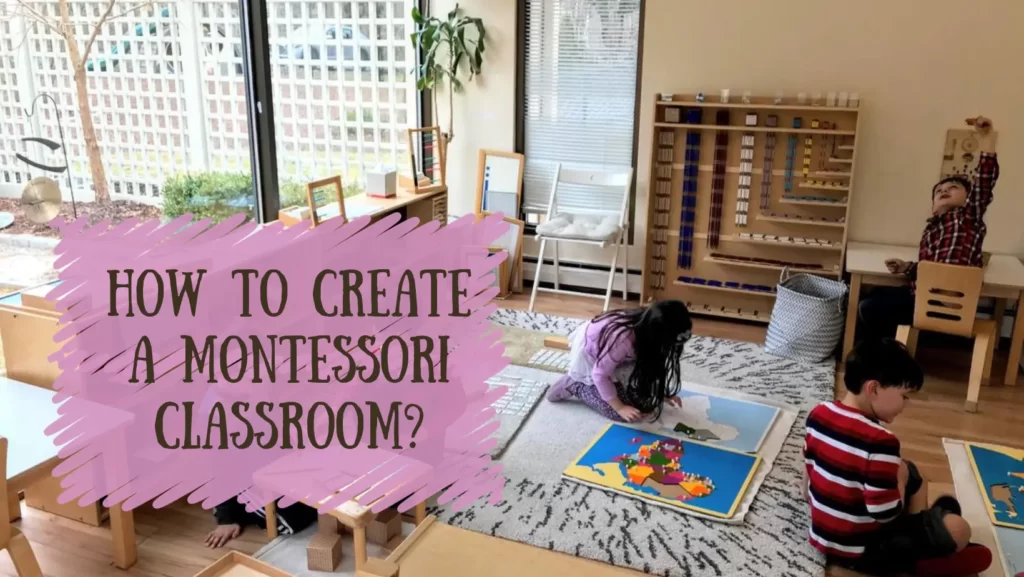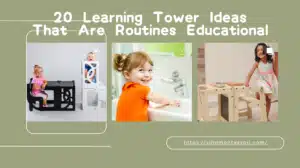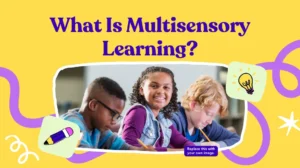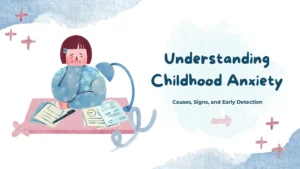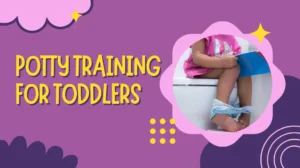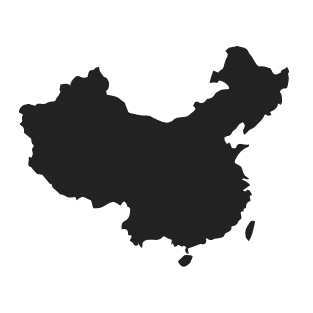As CEO of Xiha Montessori, I am committed to understanding and providing the ideal learning environment for young people. The creation of a Montessori classroom is about more than just furniture or space; it is about fostering an atmosphere that encourages exploration, independence, and a love of learning.
When building a Montessori classroom, the focus should be on creating a child-centered environment. This means choosing child-sized furniture, making sure the room is safe and accessible, and providing a variety of learning materials that cater to different developmental stages. Creating a space that is both engaging and stimulating is crucial, where children can learn at their own pace and interest.
Having worked on kindergarten projects around the globe, designing the layout of their classrooms and furniture, we have extensive experience and a dedicated team of professionals in creating Montessori classroom. Please continue our journey as we delve into the details of setting up a Montessori classroom, ensuring that every aspect is in line with the core Montessori principles.
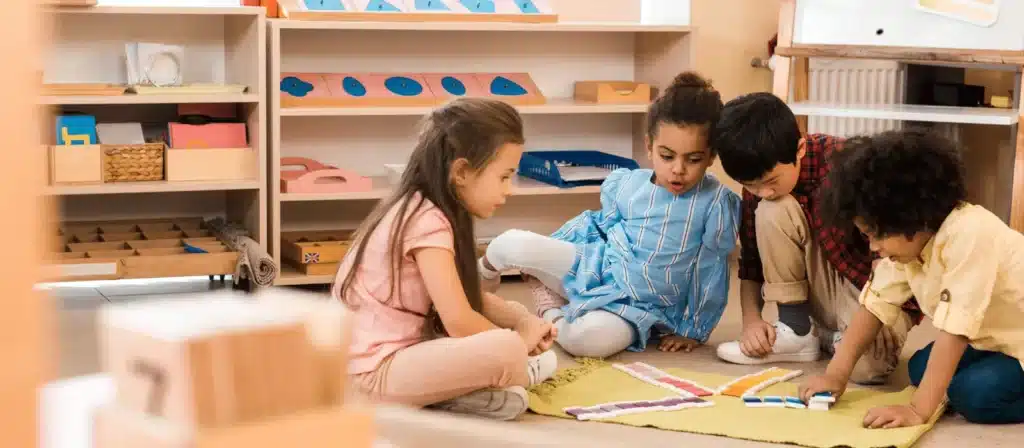
Pillars and Principles of Montessori
Montessori education is built on several key pillars and principles that define its unique approach to learning and child development.
Principles of Montessori education as defined by Maria Montessori
- Child-Centered Education: Montessori education is focused on the needs, talents, gifts, and natural pace of each child. The approach is tailored to the individual rather than imposing a one-size-fits-all curriculum.
- Prepared Environment: The environment is designed to be orderly and child-friendly, allowing for freedom of movement and choice while being conducive to learning. Everything is within the child’s reach and is sized for their use.
- Learning Through Discovery: Children are encouraged to learn through hands-on experience and discovery, fostering a love for learning and building self-confidence.
- Respect for the Child: This principle emphasizes treating each child with respect and dignity, recognizing their individuality and potential.
- Educator as a Guide: The role of the teacher in Montessori education is to guide and observe, rather than direct. The educator facilitates the learning experience rather than dictating it.
- Sensitive Periods for Learning: Montessori recognized that children go through specific periods when they are more receptive to learning certain skills. The educational approach takes advantage of these sensitive periods for optimal learning.
- Autoeducation (Self-Education): Montessori believed children have an innate ability to educate themselves when provided with a supportive, well-prepared environment.
- Freedom Within Limits: Children are given the liberty to choose their activities within the boundaries of a structured environment, promoting independence and self-discipline.
- Intrinsic Motivation: The Montessori method fosters intrinsic motivation, encouraging children to engage in tasks for the joy of learning rather than for external rewards.
- Holistic Development: The approach focuses on the development of the whole child, addressing cognitive, emotional, social, and physical needs.
These principles collectively contribute to the holistic development of children, fostering not just academic skills but also social, emotional, and physical growth. Montessori education is characterized by an emphasis on independence, respect for a child’s natural psychological development, and a belief in the child’s intrinsic desire to learn.
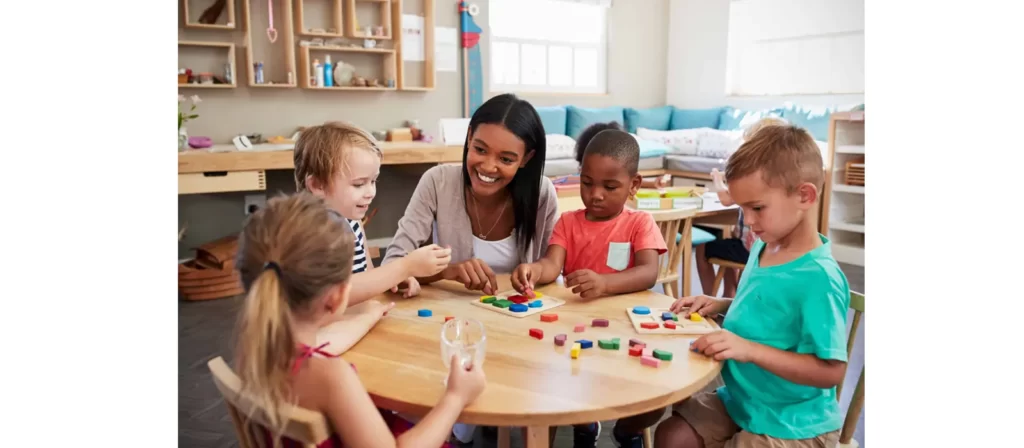
Hallmarks of a Montessori Classroom
The design of a Montessori classroom is intentional and tailored to meet the needs of children at various stages of development. Most Montessori classroom share these distinct features:
- Designated Learning Areas: Each classroom is divided into several learning areas. Typically, these areas are dedicated to sensory experiences, practical life, language, mathematics, and cultural studies.
- Minimal Wall Decorations: In Montessori classrooms, decor is kept to a minimum. Any decorations on the walls are usually both functional and simply designed.
- Natural Furnishings: Unlike many traditional classrooms that use brightly colored plastic furniture, Montessori classrooms mostly stick to natural wooden furniture. The arrangement of the furniture is less rigid, often incorporating more circles than rows.
- Soft Lighting: Lighting in Montessori classrooms is similar to what children might encounter at home. Classrooms may not have overhead fluorescent lights, but instead have fixed fixtures for specific areas to create a more comfortable atmosphere.
- Specific Organization: While Montessori spaces are designed to encourage self-directed learning, they are far from chaotic. Items, toys, and educational materials in these classrooms are neatly arranged and predictable.
- Mixed Age Groups: Montessori classrooms typically consist of mixed-age groups, such as 3-6, 6-9, or 9-12 years old. This arrangement encourages peer learning, social interaction, and collaboration.
- Montessori Materials: These are specialized educational tools that help children to self-correct and encourage them to explore and learn at their own pace.
While the design of each montessori classroom may vary depending on room structure, student needs, or resources, the purpose of educators in creating these spaces is to optimize the way children interact with their environment and with each other.
Learning Areas in a Montessori Classroom
In a Montessori classroom, the educational approach is unique, focusing on five core areas of learning: hands-on living, senses, math, language, and culture. Each area is carefully designed to foster independent learning, critical thinking, and holistic development in children.
Practical Life Area
In the hands-on living area, children engage in activities that replicate everyday tasks. Activities like rewinding buttons, cleaning and gardening instill a sense of responsibility and independence. Here, children learn to concentrate, develop fine motor skills, and understand the sequence of steps.
The hands-on living area is also where children begin to absorb social norms and manners. Sharing, taking turns and working cooperatively are all part of the learning experience.
- Objective: Develop fine motor skills, coordination, concentration, independence, and a sense of order.
- Activities: Pouring, scooping, spooning, threading, buttoning, tying shoelaces, cleaning activities, gardening, and basic cooking tasks.

Sensorial Area
Montessori materials in the sensory area are scientifically designed to help children focus on a specific quality such as color, weight, shape, texture, sound and size. It allows children to experience and understand the physical world in a more structured way. For example, when a child arranges cylinders by size or matches textures, they are honing their ability to categorize, order, and describe their experiences.
- Objective: Refine the senses and develop cognitive skills.
- Activities: Work with sensorial materials like the Pink Tower, Cylinder Blocks, Color Tablets, Sound Boxes, and Texture Boards. Activities include matching, sorting, grading by size, shape, color, taste, smell, and sound.

Math Area
The math area of the Montessori classroom introduces math concepts in a tangible and concrete way. Materials such as bead chains, spindle boxes, and gold beads make abstract concepts such as counting, decimals, addition, subtraction, multiplication, and division concrete and accessible. This hands-on approach demystifies math and makes it a fun and engaging subject. In this area, children develop a strong sense of numbers, an understanding of place value, and the ability to think logically.
- Objective: Develop an understanding of numbers, symbols, sequences, and basic mathematical operations.
- Activities: Number Rods, Sandpaper Numbers, Spindle Boxes, Bead Chains, and Golden Beads for learning counting, addition, subtraction, and the decimal system.
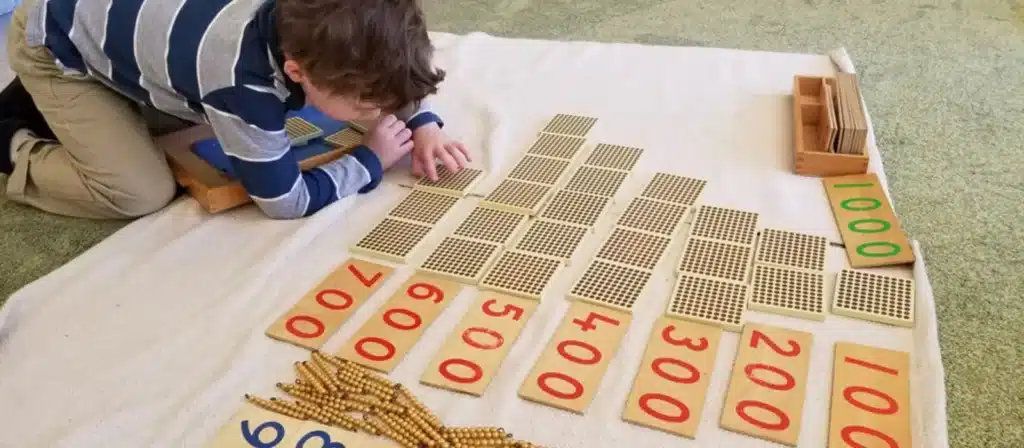
Language Area
The Montessori classroom’s language area is rich with materials and activities that support the development of reading, writing, and communication skills. From simple matching games that develop vocabulary to complex sentence structure analysis, the Montessori Language Zone is a comprehensive literacy environment. The Language Zone also focuses on oral communication. Storytelling, discussion and vocabulary enrichment activities help children develop strong communication skills. This area also exposes children to different genres of literature.
- Objective: Develop communication skills, vocabulary, and the foundations of reading and writing.
- Activities: Storytelling, reading aloud, conversation, Sandpaper Letters (tracing and phonetic sounds), Moveable Alphabet (word and sentence creation), and classification of objects and pictures.
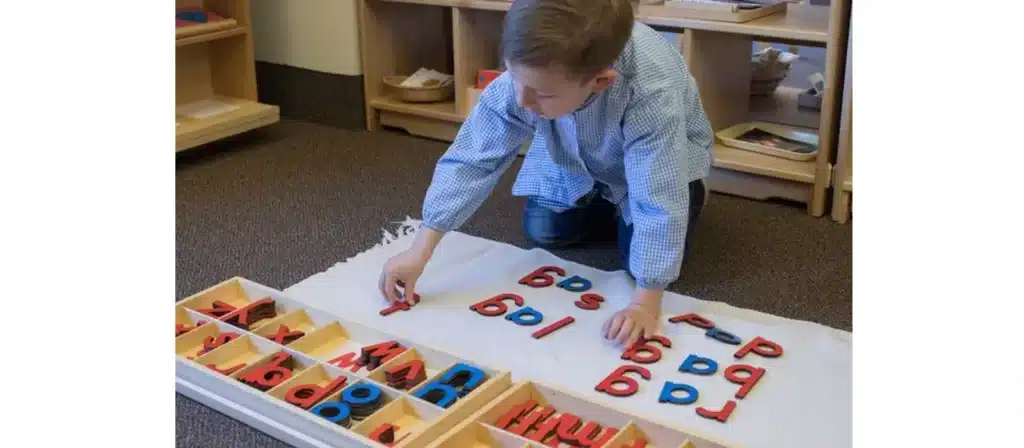
Cultural Area
The cultural area of the Montessori classroom covers geography, science, art and music, providing a holistic view of the world. Here children learn about different cultures, the physical world, plants, animals and the universe. Materials such as puzzles, botanical cabinets, and a timeline of life introduce children to the diversity of the world and the interconnectedness of all living things.
In the cultural area, children engage in hands-on activities that develop their curiosity and understanding of the natural world. They learn about continents, countries and cultures, developing respect and curiosity about people and places around the world. Art and music are also essential, encouraging creativity and self-expression.
- Objective: Introduce children to geography, science, history, and cultural diversity.
- Activities: Puzzle maps for geography, time-lines for history, nature walks, basic experiments, cultural celebrations, and learning about animals, plants, and the solar system.
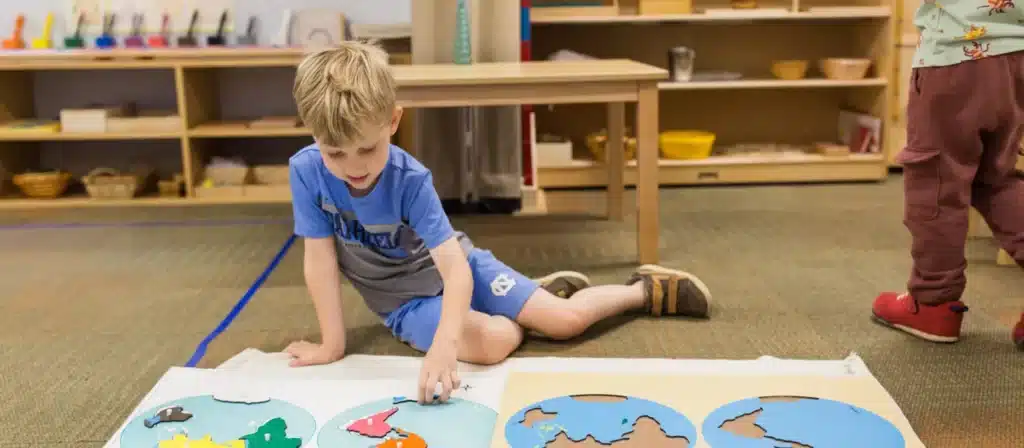
Outdoor Classroom
One of the main pillars of the Montessori philosophy is a connection with the natural world. Doctor Maria Montessori herself understood the important role of nature and outdoor play in a child’s healthy development:
“There must be provision for the child to have contact with nature; to understand and appreciate the order, the harmony and the beauty in nature.”
An Outdoor Classroom is a concept in education that extends learning beyond the traditional indoor classroom setting into the outdoors. This approach leverages the natural environment as a vibrant educational space, offering unique opportunities for hands-on learning, exploration, and connection with nature. Key aspects of an outdoor classroom include:
- Nature-Based Learning Environment: The primary setting is outdoors, often in a garden, park, or other natural space. It’s designed to use the natural surroundings as teaching tools.
- Interactive Elements: Outdoor classrooms typically include elements such as gardens, weather stations, nature trails, and water features. These components provide practical, real-world experiences for students.
- Curriculum Integration: The outdoor environment is used to teach various subjects, from science and biology (studying plant life, ecosystems) to math (measuring plant growth) and literature (reading in a natural setting).
- Sensory Experiences: Outdoor classrooms provide rich sensory experiences, with students able to see, touch, smell, and hear nature, which enhances learning and retention.
- Physical Activity: Learning outdoors often involves more physical activity than traditional classrooms, contributing to students’ physical health.
- Development of Environmental Stewardship: Regular interaction with the natural environment can foster a sense of responsibility and care for the planet among students.
- Enhanced Social and Emotional Learning: Outdoor learning environments often encourage teamwork, problem-solving, and independence, contributing to the development of social and emotional skills.
- Adaptability and Flexibility: Outdoor classrooms can be adapted to suit different ages, abilities, and learning objectives, making them a versatile teaching resource.
- Inclusivity: The outdoor setting can be particularly beneficial for students who might struggle in a traditional classroom setting, including those with ADHD or other learning differences.
- Creativity and Imagination: The open, less-structured nature of outdoor spaces can stimulate creativity and imagination in students.
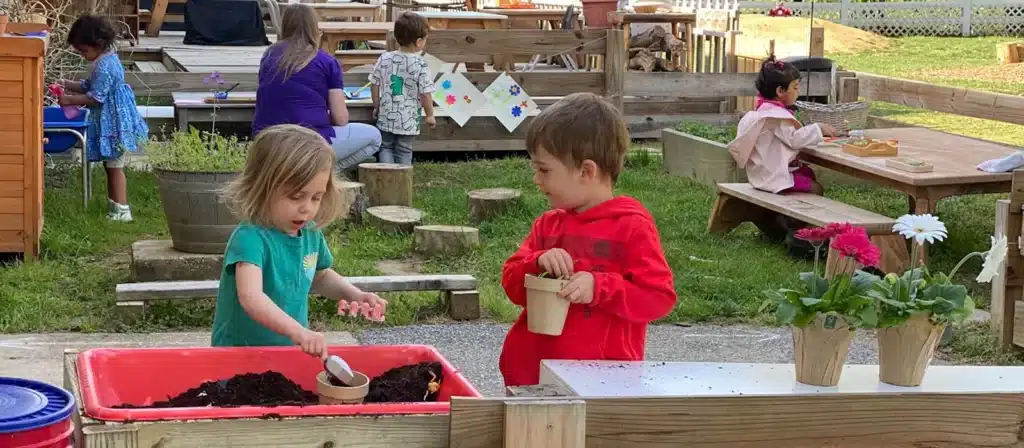
How do you decorate a Montessori style classroom?
Setting up a Montessori classroom involves a thoughtful arrangement that fosters independence, learning, and organization. Here are some guidelines to follow, combining your instructions with previous content:
- Create Defined Learning Areas: Organize the classroom into specific areas dedicated to different subjects such as practical life, sensorial, language, mathematics, and cultural studies. This helps in maintaining structure and focus.
- Select Child-Sized Wooden Furniture: Furnish the classroom with furniture that is durable and appropriately sized for children. Wooden furniture is preferred for its natural aesthetic and sturdiness.
- Use Open Shelves Within Children’s Reach: Materials should be stored on open shelves that are easily accessible to students. This arrangement encourages independence and choice in learning activities.
- Maintain an Organized and Clutter-Free Environment: Keep the classroom neat and tidy, with a place for everything. This minimizes distractions and promotes a conducive learning environment.
- Regularly Update Cultural Materials: Rotate the materials in the cultural area monthly to maintain engagement and expose children to new and diverse concepts.
- Limit Wall Decorations: Decorate walls with a few educational and simple charts. Excessive decoration can be distracting for children.
- Utilize a Large Corkboard for Art Displays: Display children’s artwork on a corkboard, allowing for a rotating gallery that showcases their creativity and respects their work.
- Avoid Battery-Operated Toys and Screens: Choose educational materials and toys that are free from electronics. This encourages more interactive, hands-on learning.
- Prefer Wooden Materials and Toys: Opt for wooden toys and materials whenever possible, as they are durable and offer a more natural sensory experience.
- Choose Attractive and Realistic Printable Materials: Use realistic and visually appealing printable materials that are relevant to the children’s learning and environment.
- Promote Practical Life Skills: Encourage activities that involve everyday skills like cleaning, organizing, and taking care of plants. These activities foster independence and responsibility.
- Be Responsive to Student Interests: If a child does not show interest in a material, replace it with something else that might engage them more effectively.
- Implement Montessori Mats: Introduce Montessori mats and teach students how to use them. These mats define individual workspaces and aid in organization.
By following these guidelines, a Montessori classroom can become an environment that not only facilitates learning and development but also respects and nurtures the individual needs of each child. Creating such a space requires careful planning and attention to detail, ensuring that the environment is both stimulating and orderly.
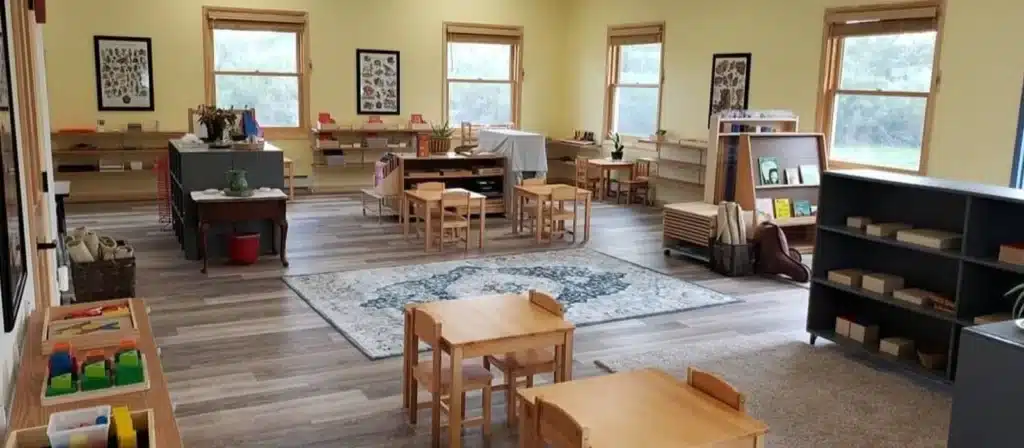
What Are the Essential Elements of a Montessori Classroom?
In the Montessori classroom, the environment is both the teacher and the educator themselves. Essential elements include a range of sensory materials that encourage hands-on learning and discovery. These materials are not only educational, but also aesthetically pleasing and made from natural, high-quality materials. The shelves are accessible, allowing children to choose their activities and foster independence. Each activity is designed to be part of self-correction, which promotes problem-solving skills and self-assessment. The classroom should also include a cultural area that introduces children to a variety of global cultures and concepts. This multicultural approach broadens their understanding of the world and fosters respect and curiosity about different cultures.
Selecting the Right Montessori Furniture: What to Look For?
Furniture choices for Montessori classroom go beyond aesthetic appeal; it’s about functionality and child development.
Tables and chairs should not only be appropriately sized, but also adjustable to accommodate children’s growing needs. Storage units should be open to promote self-sufficiency as children learn to remove and store materials independently.
The choice of colors and textures in furniture also plays an important role. Neutral tones and natural textures help create a calm and focused atmosphere that is conducive to learning.
Also, consider furniture that encourages collaboration, such as round tables or open school spaces, which are also important for team learning and group activities.
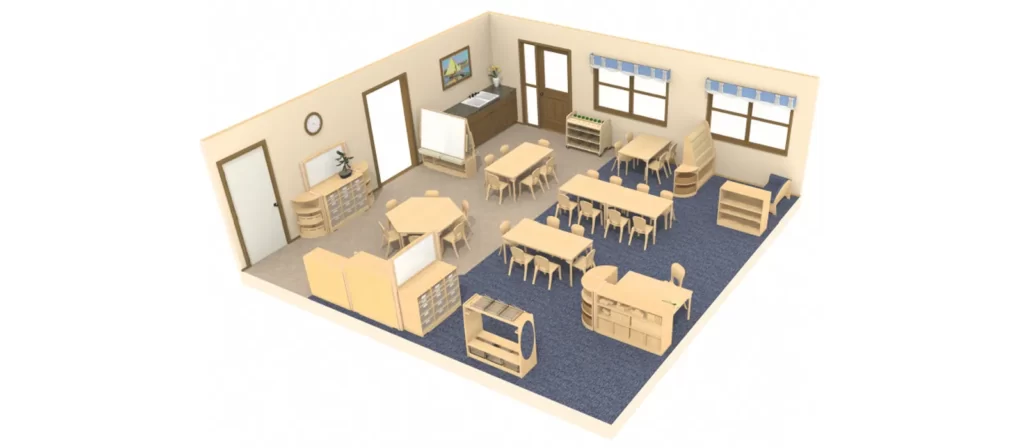
Designing the Layout: How to Optimize Learning Spaces?
The optimal layout of a Montessori classroom requires specialized designs, each of which has a purpose for its existence. It should have to encourage freedom while maintaining order.
Classrooms should be divided into clearly defined subject areas such as practical life, sensory, math, language and culture. Each area should be spacious enough for children to work and learn comfortably, either individually or in small groups.
Reading corners with comfortable seating encourage quiet learning and literacy. Natural lighting is essential, so arrange classrooms to maximize daylight.
Outdoor spaces should also be viewed as an extension of the classroom, with opportunities for gardening, nature exploration, and physical play. This connection to nature is a key element of Montessori education, fostering environmental awareness and appreciation.
Incorporating Montessori Principles in Classroom Management
Effective classroom management in a Montessori environment centers on respect, responsibility and community. It involves establishing routines that children can understand and follow, creating a sense of predictability and security.
Teachers should mimic the behaviors they expect from their students, demonstrating respect, patience, and a love of learning. Classroom rules should be few, simple, and positively framed, emphasizing what children should do rather than what they should not do.
Conflict resolution skills are taught and practiced, empowering children to resolve disputes respectfully and independently. The role of teachers as observers is crucial. Through careful observation, they can more effectively guide each child’s learning journey, customizing their approach to each child’s unique needs and interests.
Ensuring Safety and Comfort in a Montessori Environment
A safe and comfortable Montessori environment is critical for effective learning. This includes having non-toxic, environmentally friendly materials and maintaining a clean and sanitary space.
Ergonomic design is important to ensure that children are comfortable throughout their learning activities. This includes having adjustable lighting that minimizes glare and shadows and providing a mix of soft and hard seating options.
Temperature control is important to maintain comfort, ensuring classrooms are neither too hot nor too cold. Acoustics are also taken into account, working to minimize external noise and echoes within the classroom. This creates an environment where children can concentrate without unnecessary distractions.
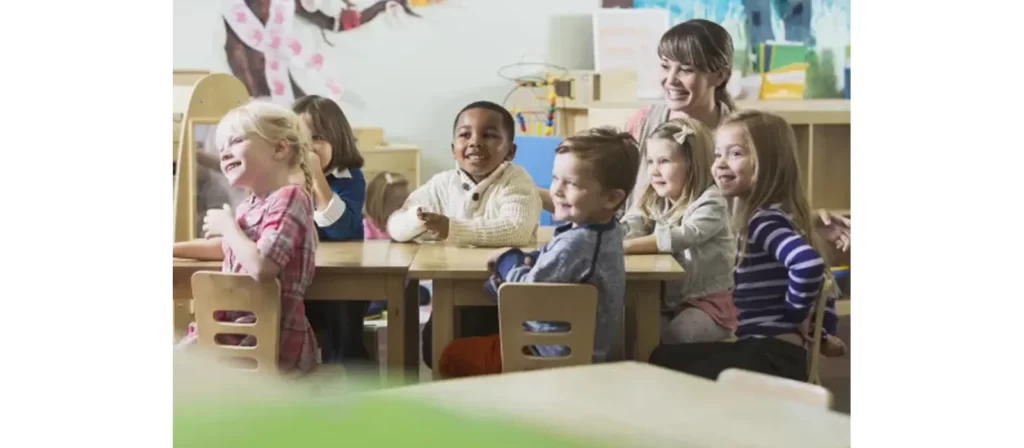
Plan a Montessori Classroom Curriculum
Planning a Montessori classroom curriculum involves creating a structured yet flexible framework that encourages children to explore and learn at their own pace. The curriculum should be holistic, covering a range of developmental areas. Here’s a basic outline for a Montessori preschool curriculum:
Consider incorporating these elements in your redesigned curriculum:
- Clearly defined objectives that align with Montessori principles and cater to the developmental stages of preschoolers.
- A diverse range of materials, carefully selected for both individual exploration and group activities.
- Detailed instructions and support strategies for teachers
- A set of classroom norms and conduct guidelines, fostering a respectful and productive learning environment.
- Flexibility in lesson plans to accommodate the varying paces and interests of children, encouraging self-directed learning.
- Evaluation methods that are in line with Montessori philosophy, focusing on individual progress rather than competitive metrics.
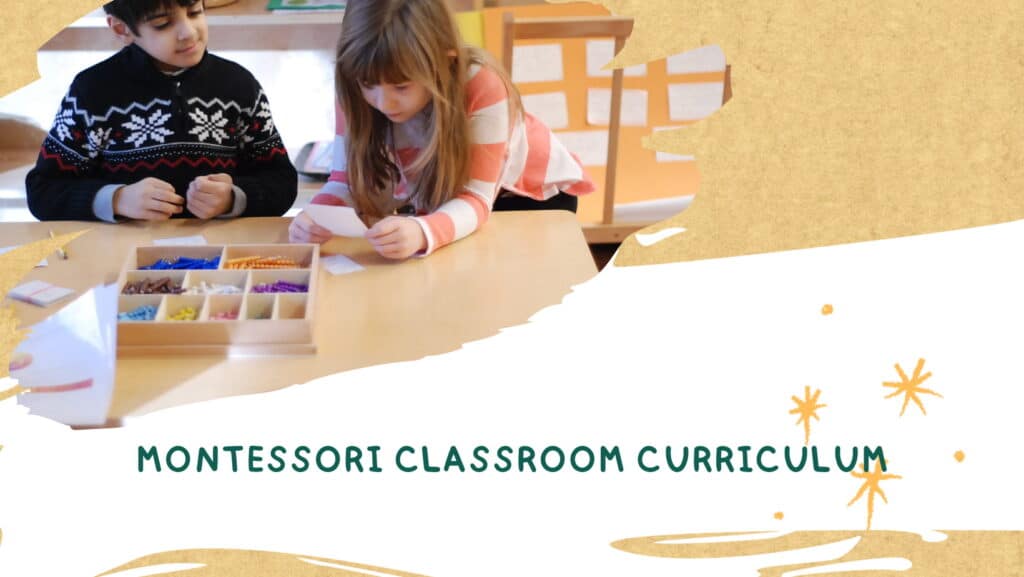
Beyond the Classroom: Engaging Parents and the Community
Engagement with parents and the community in a Montessori environment extends the learning environment beyond the classroom. Regular workshops and meetings with parents help them understand the Montessori philosophy and enable them to help their children learn at home.
Community involvement can take many forms, such as inviting local experts to speak in the classroom, organizing field trips or community service projects. These activities help children learn about roles in the broader community and develop a sense of responsibility and empathy.
Partnerships with local businesses and organizations can also provide real-world learning opportunities, making education more dynamic and relevant.
Partnerships between home, school, and the broader community help the overall development of each child.
Conclusion
Expanding the Montessori classroom’s role and reach is not just about creating an optimal learning environment; it’s about fostering a community of learners, educators, and supporters. By focusing on these key areas, we not only enhance the educational experience for our children but also build a foundation for lifelong learning and curiosity. At Xiha Montessori, we remain committed to this vision, continually striving to provide the best in educational furniture and resources.

